Most beautiful Thailand temple: Wat Si Chum
A eleven meters high statue in a roofless cage. A small opening, almost a crack within, allows the Big Buddha to observe the travelers coming. One hand points to the ground and his serene eyes gaze in to the infinity. The cats that roam the temple sometimes lie down on his lap and he smiles, as he has done for over seven hundred years. Is Phra Achana, located in Wat Si Chum (Shukhotai historical park) Thailand’s most beautiful Buddha.
But all categorical superlatives belong to the realm of the subjectivity, even more in a country like Thailand, with millions of Buddha statues. Some are larger than Phra Achana, most luxurious, most enigmatic and more worshiped. This is the case of the Reclining Buddha and the Emerald Buddha in Bangkok, the mysterious head in Ayutthaya or complex of temples and stupas of Doi Suthep. Phra Achana (Wat Si Chum) located in Shukhothai, is a must stop when visiting Thailand. And to explain why it is the most beautiful Buddha is worth to explain some of the basics of this ancient religion.
1. Buddishm flavour
Is quite possible that the great Western public began to view Buddhism as something close when such charismatic actors like Keanu Reeves or Richard Gere publicly announced that they embraced the teachings of Buddha. It isn’t illogical: first, the Asian immigration at United States West Coast bloomed from late nineteenth century some of the main Buddhist schools of the West. Moreover, the famous live fast, die young Californian was a perfect breeding ground for a needy society of soul-searching and self-improvement. Therefore the two worlds were destined to meet.
But what exactly is Buddhism?. What are its principles and rites?. What teaches us?. What is that nirvana?. These are not simple answers, because we’re talking about a religion with over twenty-five centuries old. Thailand is a good place to begin knowing Buddhism, because is an accessible point for those traveling to Asia for the first time. There are many other places where Buddhist temples are not so overrun by mass tourism, but being so exotic and yet so westernized destination is a convenience not to overlook.
More or less everybody has certain notions of what Western art is. We are able to understand and enjoy what lies ahead when we visited a church or a Gothic cathedral, at least in essence: understand the symbolic importance of light, know terms such as altar, vault and we could mention one or two basic traits of every artistic movement. We might belong to the Christian culture, whether we believe, we know full well who is this crucified man and the woman who mourns his death. But when visiting a country where the Christian code does not exist, we feel something like a small child who does not know the world and can only be guided by what our instinct and senses tells us.
This often happen in Thailand, where Buddhism is everywhere and one runs the risk of become saturated. The extravagance (to our Western eyes) of the forms, colorful decoration and its millions of Buddha statues in various poses make us feel overwhelmed in a few days there. After a few days we indeed not know exactly where to look. And so we develop a need to find an explanation trying to translate what we see, to our Western standards. Just as when we speak in another language we literally make a translation and then we realize that something is wrong: Buddhism and Christianity are two very different religions. So we were look at the Buddha and wonder what is the main message of the god who is this worshiped in Thailand.
2. A few Buddhism concepts to understand
The first concept that must be clear: Buddha is not a god nor intended to be. At the end of his life, when his message was revered even by some kings, he refused many times to be a god, saint or angel. When asked what he was, Buddha always said: “I am someone who has awakened.”
This denial of the Buddha of his divine essence has aroused and still arouses a heated debate: Is Buddhism a religion or not?. Some argue that it can not be because there isn’t a divine figure to be worshiped. Others argue that the existence of a custom that gives the religious rank and, ultimately, Buddhism is regarded as the official religion in Thailand. In the end is just a semantic issue: to close this discussion we should just be able to reach an agreement on the definition of religion. Same as the definition of planet was agreed before deciding that Pluto was not a planet after all. We will speak of Buddhism as a religion to avoid even more complex concepts.
But if he wasn’t a god, what or who is Buddha?. Simple: an Indian prince of sixth century BC named Siddhārtha Gautama who managed to find the way out the “Samsara”, one of the basic concepts of Hinduism. Samsara is the eternal cycle of death and resurrection, when a individual dies his spirit is reincarnated in another being, and so on until the end of time. Samsara causes suffering in the mind, as each new incarnation brings pain and anxiety. After a life of experiences, Siddhartha found the enlightenment needed to understand how to make nirvana, which is the breaking of saṃsāra, the release of this ongoing eternal movement. Once nirvana is reached, the spirit is freed from the endless cycle and can finally rest in eternal state of peace and relaxation. After that moment of enlightenment, Siddhartha took the nickname of Buddha, which means “one who has awakened” or “one who has been enlightened,” and dedicate his life to disseminating its teachings on the nirvana.
Nirvana, therefore, is the goal of Buddhism. To achieve nirvana one must get rid of the three bonds that keep us attached to the physical world: excessive attachment to material goods, hatred and ignorance. These three bonds, also considered like three fires are causing our anxiety and our despair, or, in Buddhist terms, the dukkha characteristic of saṃsāra.
3. Back to Sukhothai Historical Park. Wat Si Chum.
Located in the center of the country, Sukhothai stands proudly recalling his glory days as the first kingdom of Thailand’s history, although historians believe that some other realm existed before. The historic site is located twelve kilometers from modern Sukhothai, where travelers who want to visit the ruins stay. From Bangkok takes seven hours by bus or nearly five from Chiang Mai. If you want to travel by train, it is necessary to reach the neighboring Phitsanulok and from there ride another hour by bus to Sukhothai.
The kingdom of Sukhothai began in 1238, when the first Thai rebelled against the power of the Khmer empire that dominated most of Southeast Asia (having in Angkor, their great city). Ramkhamhaeng, son of the first Sukhothai king, was the one who brought glory to the kingdom: he created a social and military in the likeness of the Khmer organization, invented the Thai alphabet used today and took Buddhism as the official religion of the kingdom.
But every kingdom needs a own style to show themselves, and thus appeared in the Buddhist iconography the so called “Sukhothai style”. In this style, one of the most recognizable of Thai Buddhism, Buddha characterized by having a long thin nose and a flame bump on the head. Another iconographic style is to represent Buddha is a walking attitude that transcends the masculine and the feminine, somehow lordly, buts still having humanity.
Sukhothai Unesco site
The historic site of Sukhothai, was declared World Heritage Site by Unesco, and is an absolute must for any lover of Buddhist iconography. Its many temples (or Wat’s in Thai language) contain countless sculptural wonders that are magnified by nature’s presence. This is the case at Wat Marathas, the impressive royal temple, or Wat Saphan Hin, with a monumental Buddha standing on top of a small hill.
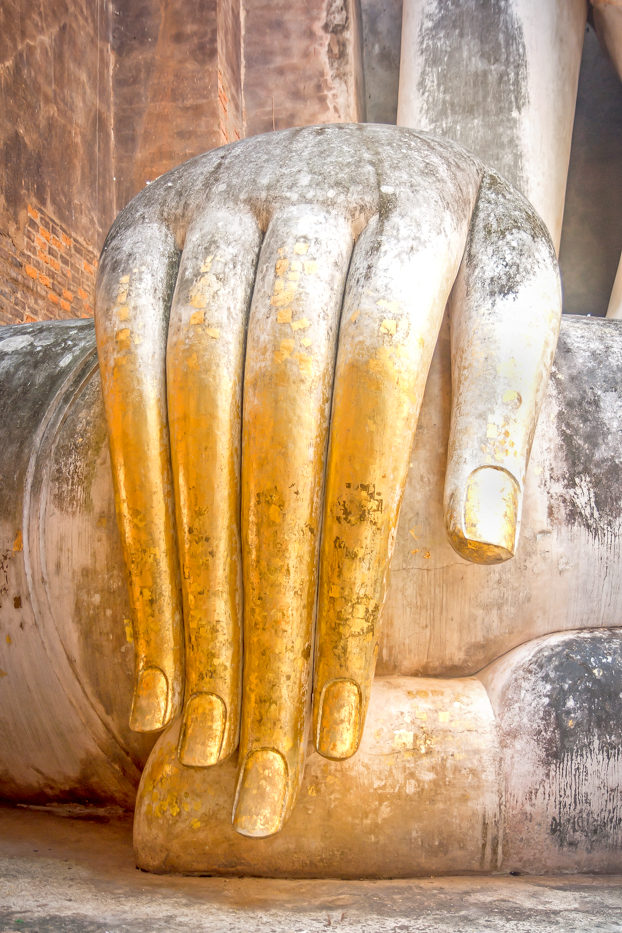
Wat Si chum. Photo @ Andrea Schaffer
4. Phra Achana stands proud
Phra Achana, Thailand’s most beautiful Buddha, is in a thirteenth-century temple called Wat Si Chum, about a kilometer and a half from the central area of Sukhotai and barely nothing is left standing. The first thing to notice upon arriving here is the contrast between its small cubicle and the grandeur of the statue of the Buddha sculpture. That stays locked within fifteen meters of the mandapa, a cubic structure with a pyramidal roof in the function of a sanctuary.
But nothing is known about the roof, even if it ever existed: Sukhothai succumbed to the emerging kingdom of Ayutthaya back in the fifteenth century and was gradually was forgotten. And then, when all seemed lost, there appeared Fournereau Lucien, an archaeologist and French architect who in the late nineteenth century went looking for the remains of the major kingdoms of the area, leaving an impressive photographic legacy. To Fournereau we owe, among others, the discovery of the ruins of Angkor and Sukhothai and we should be appreciated for this. We also owe him the graphic testimony that indicates how the state of Phra Achana was at the time.
Compare the current image of Buddha with the one in this photo:
Restoration
Throughout the twentieth century Sukhothai was properly restored, as the current beauty of Phra Achana evidences. It is difficult to know, however, how was the roof-top cover of Wat Si Chum. There are many theories, even some people think that housing was never built. Anyhow, the current state gives the environment a special charm. Not only from an aesthetic point of view, but also because the absence of cover enhances the place represented by the statue, one of the most important moments in the life of Siddhārtha Gautama.
There are several ways to represent the Buddha, sitting, standing, walking or reclining. Each of these positions has a different meaning, like the “mudras”, which are the different positions of Buddha hands. Phra Achana sitting with legs crossed, his left hand on his lap and his right hand pointing to the ground. This place, perhaps is the most represented in Thailand, and represents the time of enlightenment: after several years of searching enlightenment and feeling that the time is near, Siddhartha decides to sit under a tree and not get up until he reaches the illumination. An evil demon named Mara tries in various ways to dissuade him, but Siddhartha touches the ground with his right hand to ask the earth to witness his coming enlightenment. Earth answers with a shower of flowers that makes Mara surrender, after that Siddhartha enters in a state of absolute meditation in which have multiple visions. Including all its past incarnations, death and resurrection of all living things in the universe and how the law of karma is related to the fact of getting a better or worse resurrection. Thanks to these visions he can deeply understand the workings of saṃsāra and how to reach nirvana. Hence the explanation of why his face is displaying serenity and peace.
Peaceful sight
It is impossible to see in one picture the feeling of peace that produces such a big Buddha in a small space. A haven of tranquility and infinity despite the thick walls that constrain it. The traveler might be overwhelmed in the little space left free inside the enclosure since you can just take a few steps. And yet, it is not: there are few places as magical in Thailand as these few square meters, hosted with the sweet smile of a statue of brick. Same as when we enter in to a Gothic cathedral, it is impossible not look up when we enter the mandapa. But the beauty of Wat Si Chum is opposed to the Gothic, for there lies the fascination with the sumptuousness.
Phra Achana Splendor long gone
Phra Achana knew a life of splendor seven hundred years ago, but fell into oblivion, was almost completely destroyed to be reborn again. Siddhārtha Gautama, the man depicted in the statue, is about to become a Buddha and smiles because he knows that there is a way to rest from eternal suffering. And the traveler, fascinated by the greatness of the moment, looks up to find that delicate smile. The Gothic Western cathedrals make us look up in to the sky to, among other things, remind us of the greatness of God. Phra Achana, however, invites us to look up but not to meet God, which we know does not exist in such was as in Buddhism. When we look up, thanks to the lack of cover, we find the open sky. The grandeur of the universe that one day we will hand, when we have cleared our excessive attachment to material things, our hatred and ignorance.
In conclusion, truly the most beautiful Thailand temple
Before leaving the temple, visitors often take a last-look back at the sweet image of Buddha. With its flagship hand is pointing to Earth, asking to witness his enlightenment. And the traveler realizes that he has also seen the light. And the most beautiful Buddha in Thailand is still smiling. But this time not smiling because having attained the enlightenment, but because he knows that, from that moment, their beauty is already an indispensable part of the traveler and the fate that awaits him.
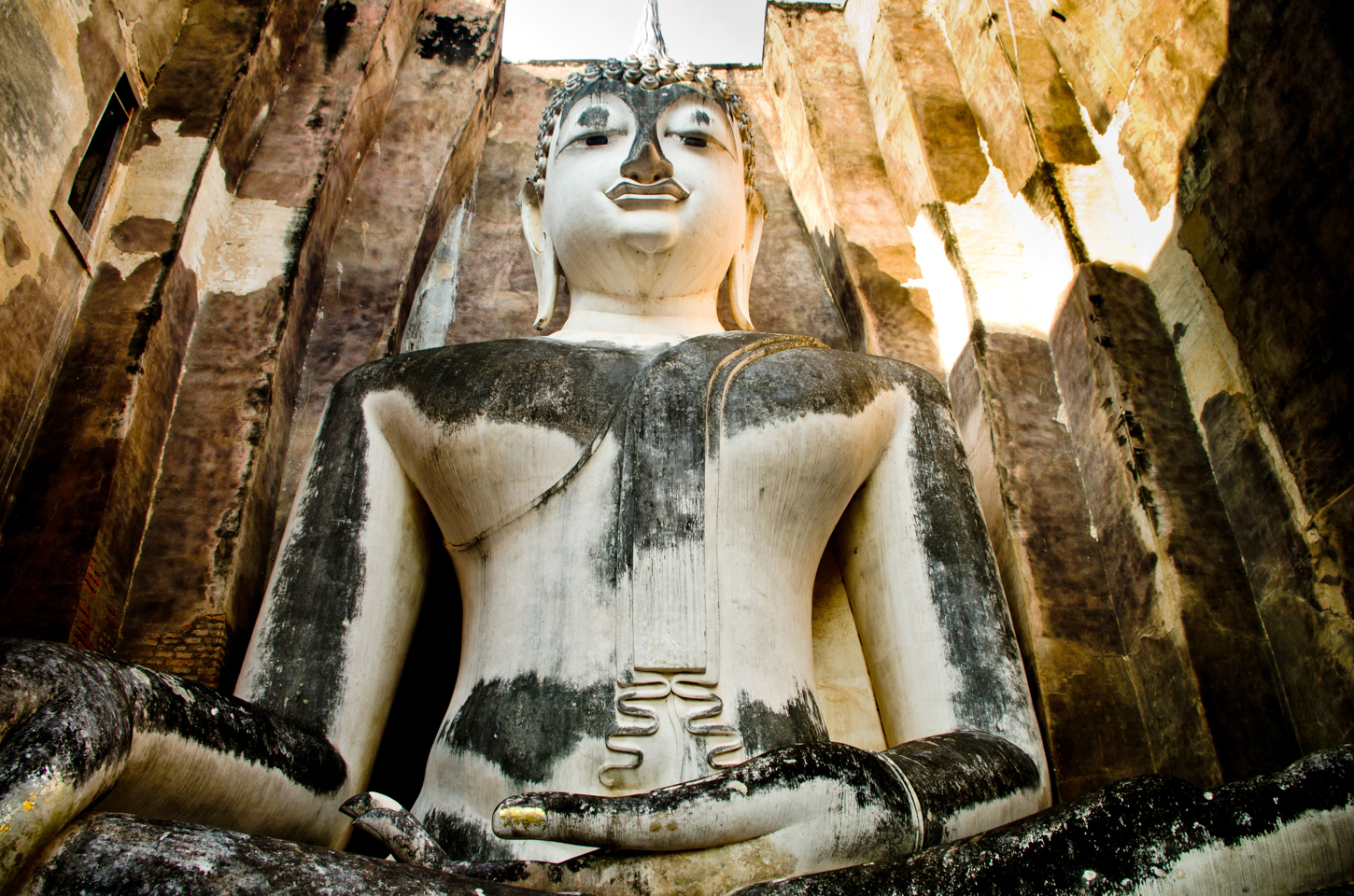
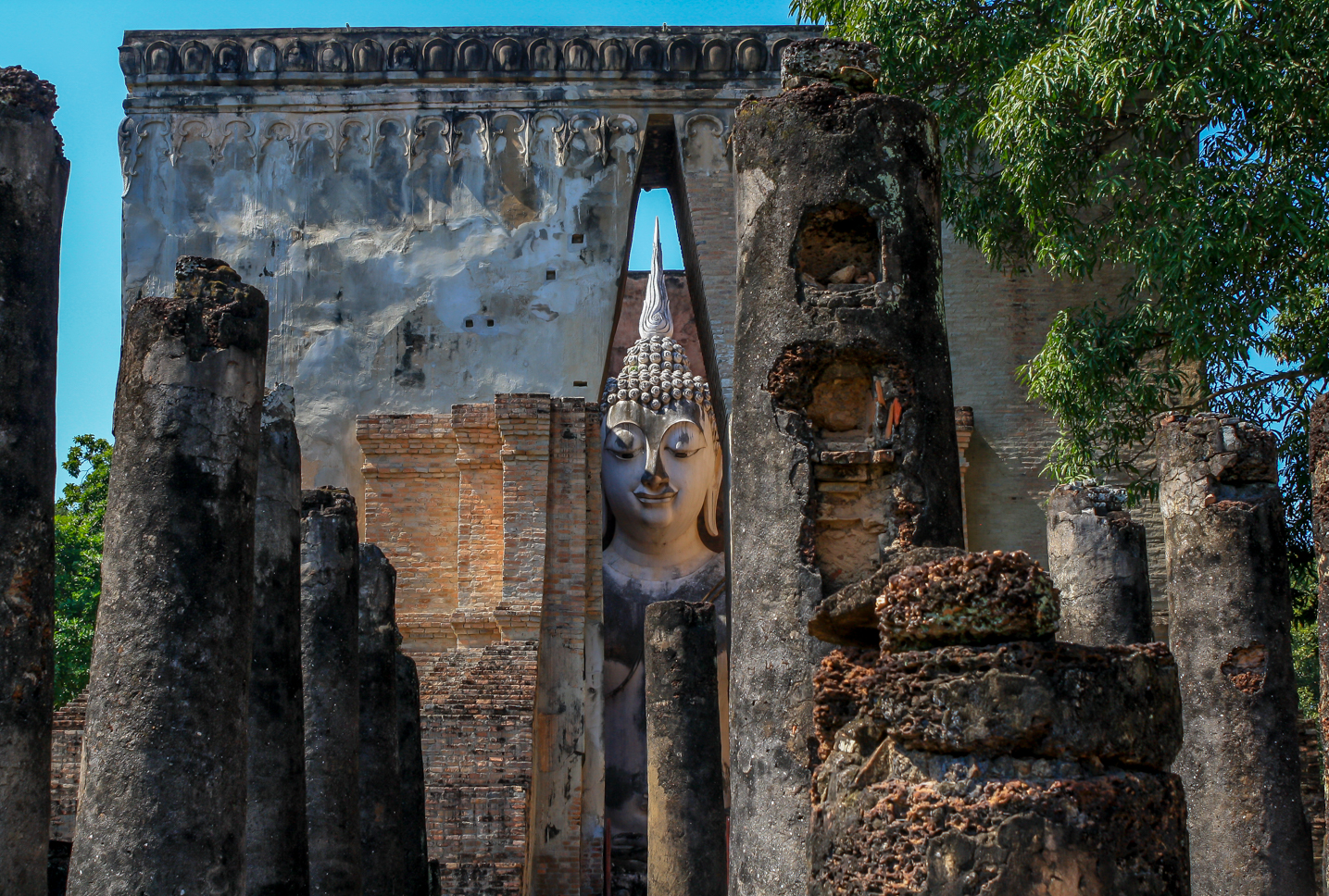
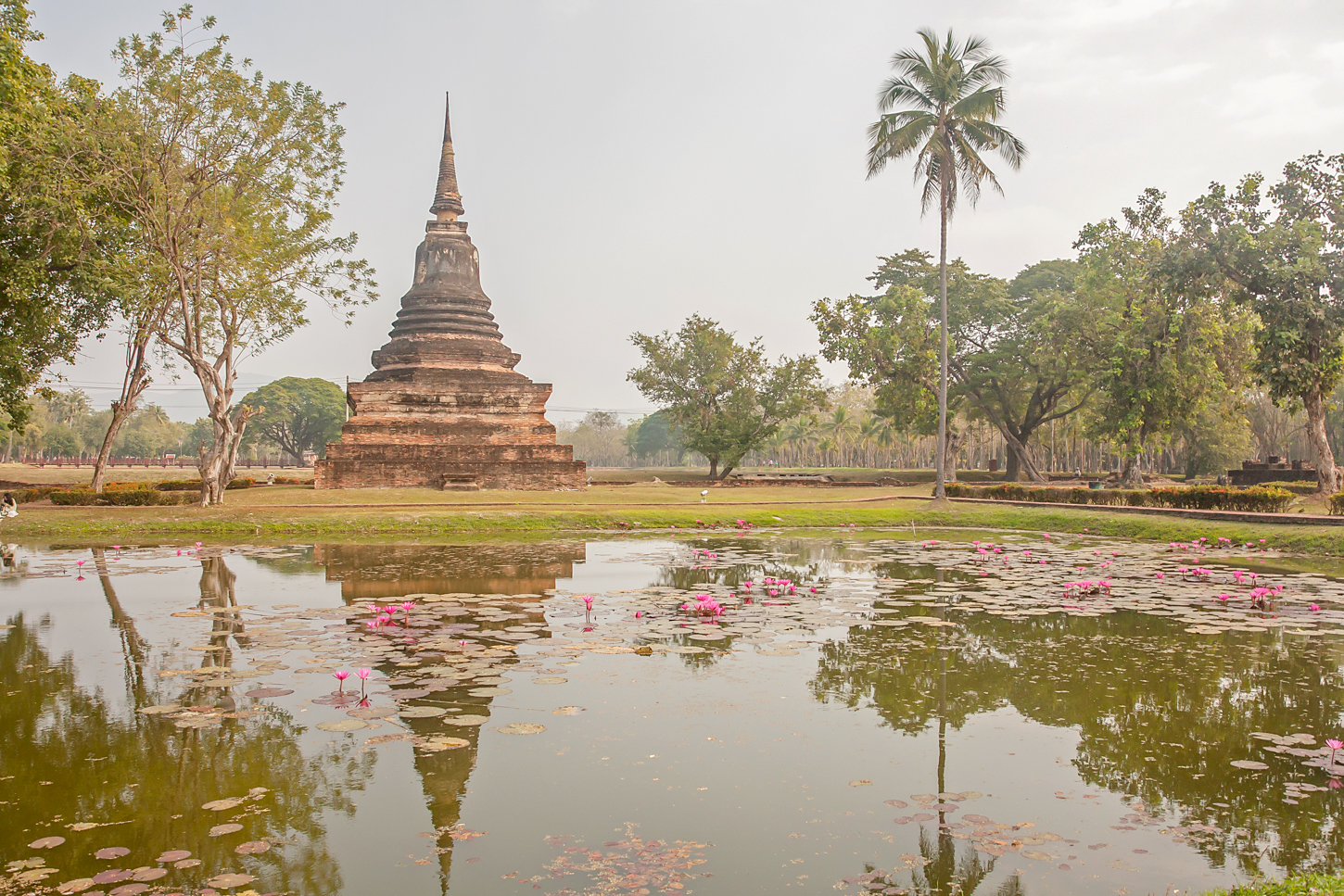
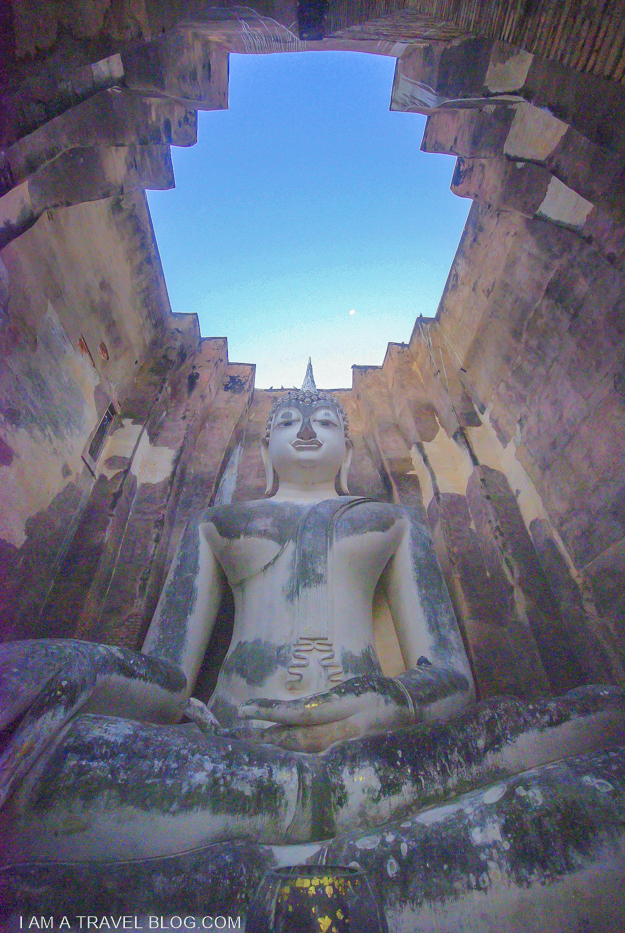
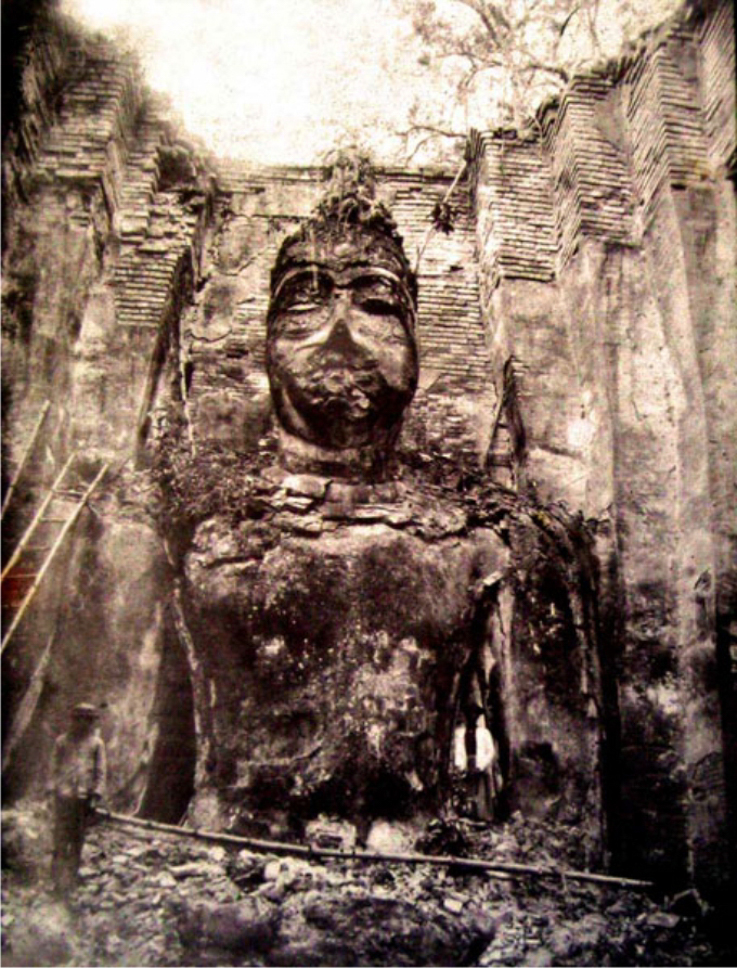
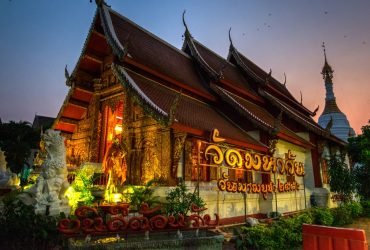
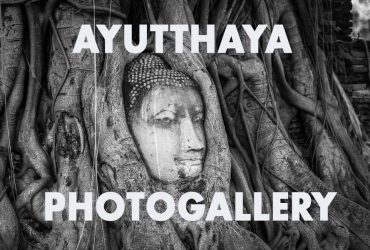




piece of information. Im glad that you shared this useful info with us. Please keep us informed like this. Thanks for sharing Bevell
paul,im trying to find how to get sukhothai, is chiang mai the closest city, i plan to be in chiang mai this trip ,always stay in koh chang thanks stuart i enjoyed visiting temples
Is not super close, it’s 300 km away.
But BKK to Sukothai is even more far away.
You can basecamp on Chiangmai, it would be fine.